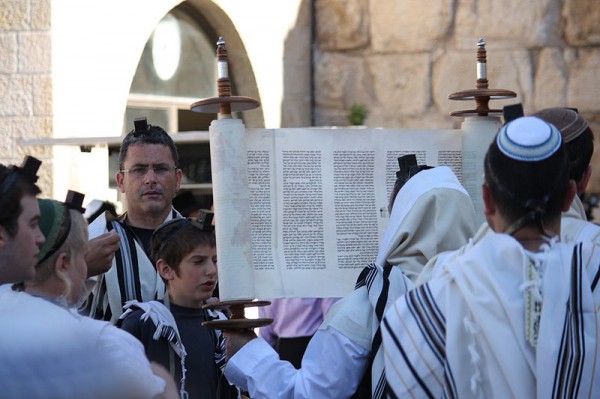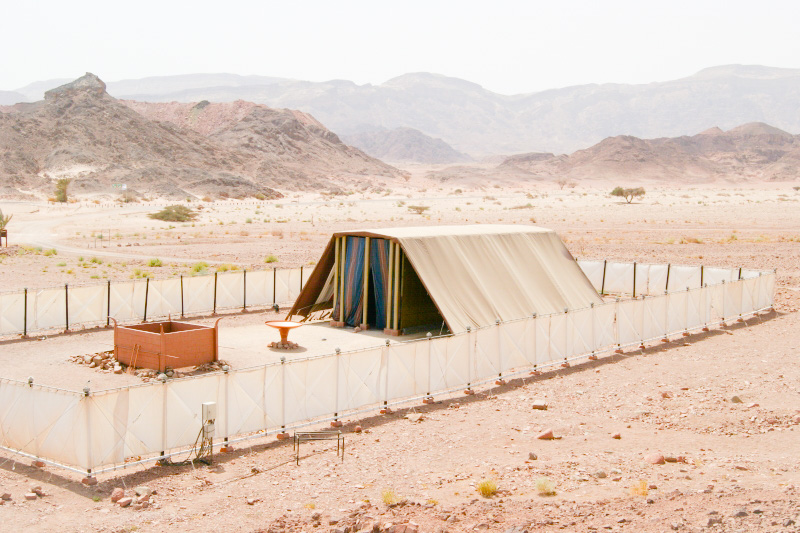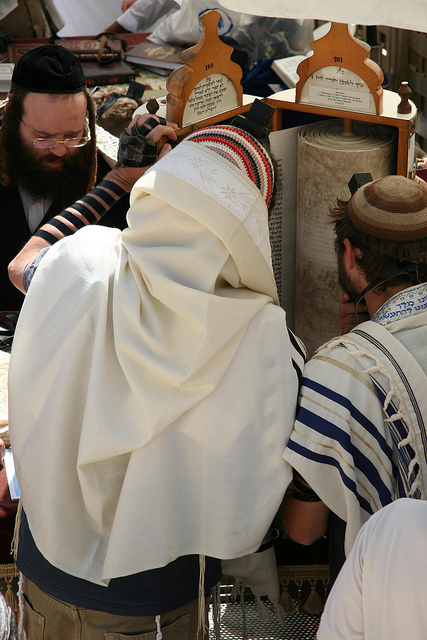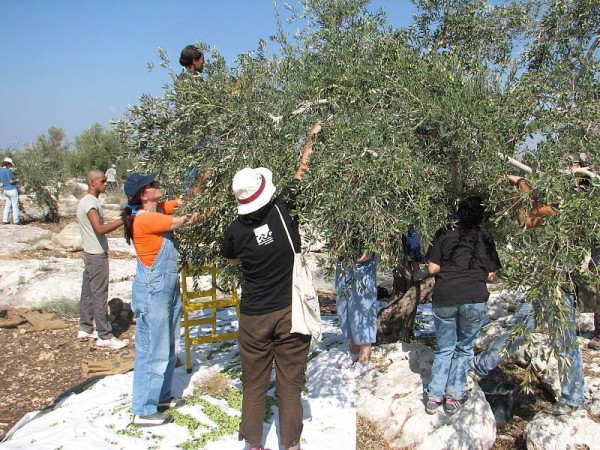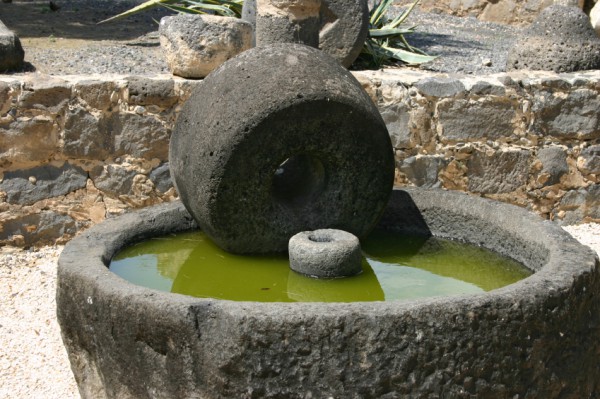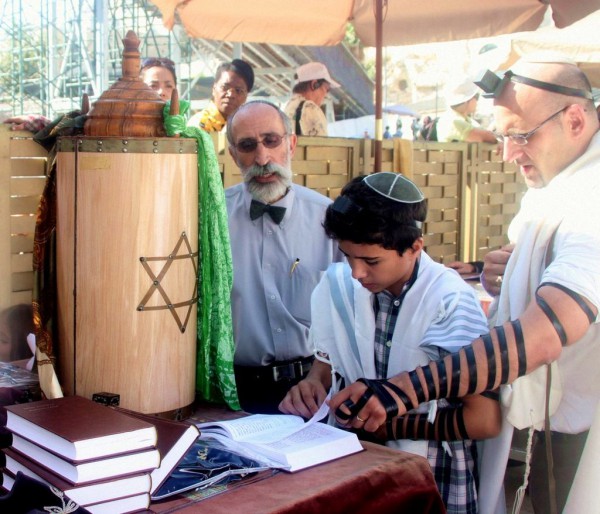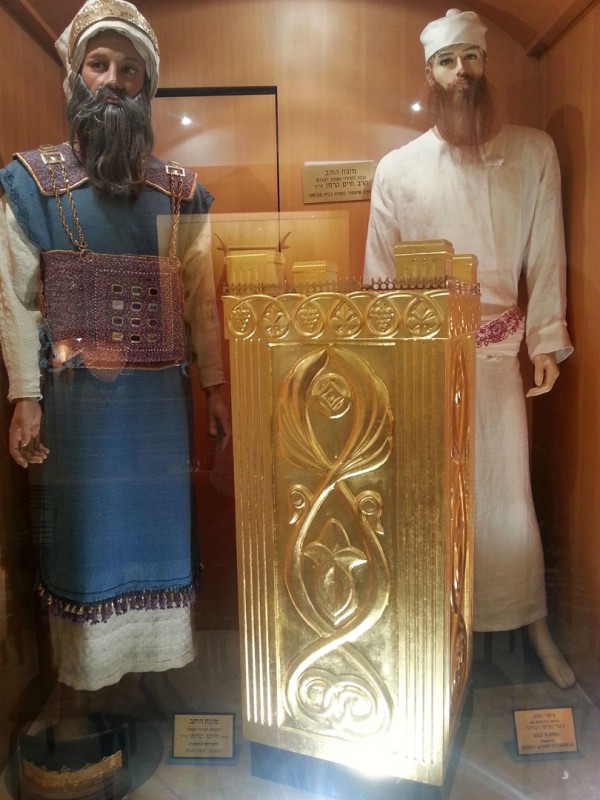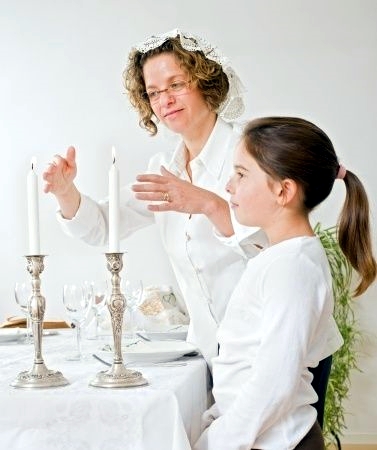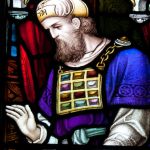Parasha Tetzaveh (You Command)
Exodus 27:20–30:10; Ezekiel 43:10–27; Hebrews 13:10–16
“Command [tetzaveh] the Israelites to bring you clear oil of pressed olives for the light so that the lamps may be kept burning.” (Exodus 27:20)
Last week, in Parasha Terumah, God called for a freewill offering to build the Mishkan (Tabernacle), God’s portable dwelling place, which would accompany the Israelites in all their wilderness wanderings.
He also gave Moses detailed instructions on its construction as well as its furnishings, including the Menorah. (Exodus 25:31–40)
This week’s Parasha begins with the commandment to the children of Israel to bring the pure olive oil for the lighting of the Menorah in the Mishkan (Tabernacle).
Aaron and his four sons, Nadab, Abihu, Eleazar and Ithamar, were initiated into the priesthood in a seven-day ceremony. God commanded the newly installed priests to keep the light of the lamps burning before the Lord in the Tent of Meeting from evening until morning—at all times.
The laws concerning the Tabernacle’s Menorah were to be a lasting ordinance for generations to come.
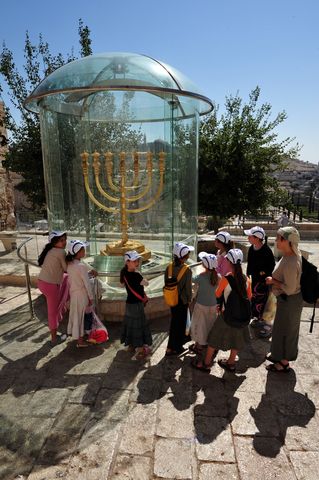
This massive, solid gold menorah was crafted by the Temple Institute for the Third Temple. This 24k menorah is on display inside a transparent case overlooking the stairs that lead down to the Western (Wailing) Wall Plaza at the foot of the Temple Mount. Its value is estimated to be three million dollars.
The Lamp of God
“The law will go out from Zion, the word of the Lord from Jerusalem…. Let us walk in the light of the Lord.” (Isaiah 2:3, 5)
The Temple Menorah, called the Lamp of God in 1 Samuel 3:3, was formed by hammering one piece of gold that weighed approximately 100 pounds.
The ornate lampstand had seven branches with each one holding a lamp, and it was seen only by the kohanim (priests) in the Mishkan.
Those kohanim who contemplated the meaning of its light were to bring enlightenment to the Israelites, so they would go forward and be a light to the nations.
“I will also make You a light of the nations so that My salvation may reach to the end of the earth.” (Isaiah 49:6)
Today, the Menorah is the symbol of the modern State of Israel. Indeed, the very existence of this nation is proof that God exists and that the Bible is the Word of God.
“They will rebuild the ruined cities and live in them.” (Amos 9:14)
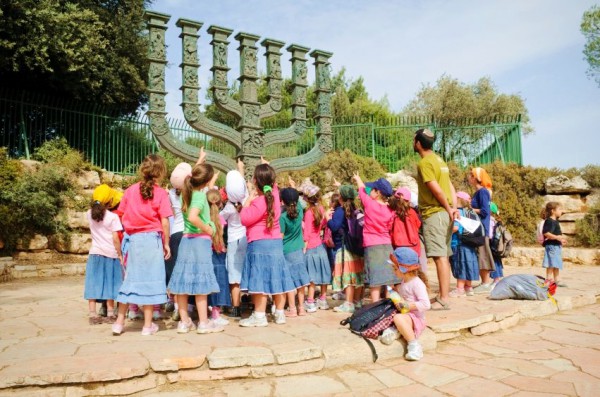
The Knesset Menorah is a bronze monument in front of Israel’s parliament, the Knesset. It is engraved with 30 important events, idioms, characters and terms from Jewish history.
I’m Going to Let It Shine
“Arise, shine; for your light has come, and the glory of the Lord rises upon you. See, darkness covers the earth and thick darkness is over the peoples, but the Lord rises upon you, and His glory appears over you.” (Isaiah 60:1–2)
In the Brit Chadashah (New Testament), Yeshua proclaimed that He is the Light of the World:
“I AM the Light of the World. Whoever follows Me will never walk in darkness, but will have the light of life.” (John 8:12)
However, when Yeshua left this world to return to Heaven, He commissioned us to carry on shining as His lights on earth.
You are the light of the world. A city set on a hill cannot be hidden; nor does anyone light a lamp and put it under a basket, but on the lampstand, and it gives light to all who are in the house.
In the same way, let your light shine before men, that they may see your good deeds and praise your Father in heaven. (Matthew 5:14–15)
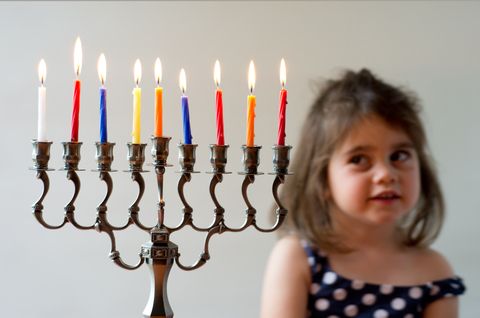
Although the Temple Menorah has seven branches, the Hanukkah menorah, called a hanukkiah, has nine branches: eight candles symbolize the eight days that a one-day supply of oil burned, and the ninth candle, the Shamash, is the candle that is used to light the eight. The Shamash is usually elevated over the other candles.
Even as darkness covers the earth, the light of the glory of Adonai may be seen upon His people.
And just as the Menorah was to shine continuously in the Tabernacle, followers of Yeshua are to keep their lights perpetually shining for Him.
Believers are warned, just as Cain was warned, not to let Satan or any other force of darkness or sin cause our light to be diminished or dimmed in any way.
“If you do not do what is right, sin is crouching at your door; it desires to have you, but you must rule over it.” (Genesis 4:7)
Oil for Anointing
Olive oil had more than one use in the Tabernacle. It was not only used to light the lamps, but was also used in the consecration of something or someone for a holy or sacred use.
When someone was anointed with the holy anointing oil, the Spirit of God came upon that person to qualify them for a specific task. For this reason, the High Priest and the sacred vessels were anointed.
To be anointed meant not only that God had chosen someone for a special task, but also that God had empowered that person to do the task.
Oil, therefore, represents the anointing.
In fact, the Hebrew word for anointing (משיחה) has the same root as Messiah (משיח – Mashiach) who is also called The Anointed One.
“Why do the nations rage … against the Lord and against His Anointed (M’shichoh – משיחו His Messiah).” (Psalm 2:1–2)
Oil for the Lamp
The oil for the lamps in the Tent of Meeting was to be of a clear, pure quality, pressed from fresh olives.
The process of producing the necessary oil took several days.
Harvesting olives in Israel begins by beating the olives off their trees with long sticks.
The fresh olives fall onto large blankets spread below the tree. They are then gathered up and pressed with heavy stones to squeeze out all the bitter juices.
As part of the spiritual refining process, we also sometimes need to go through various trials and tribulations in order to squeeze out the bitterness within our hearts, so that the anointing may flow freely. Only then can we joyously bring healing and deliverance to others.
Oil for the Second Temple Menorah
When the courageous, Jewish freedom fighters, the Maccabees, reclaimed the Temple from the Greek/Syrian forces in the second century BC, its holiness had been completely defiled with idols—statues of Greek gods—and even with the blood sacrifices of swine.
The Menorah that God had commanded to burn perpetually before Him had been extinguished.
In order to restore the holiness of the Temple, one of the most important tasks the Maccabees set about to accomplish was relighting the Menorah; however, according to legend, they found only one vial of the precious olive oil—enough to last for one day.
The miracle of Hanukkah, which is celebrated each year in December, is that this little bit of olive oil lasted the full eight days, which gave them enough time to produce more pressed oil for the lamps.
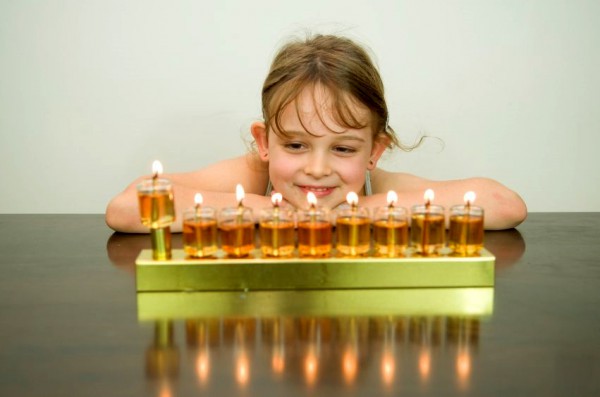
The lights on the hanukkiah can be either wax candles or oil-fueled lights. The oil menorah is considered preferable to the candle-lit menorah as it better reflects the miracle of Hanukkah.
What can we learn from this story?
One lesson seems obvious. We are to shine for the glory of the Lord and not allow the contamination and idolatry of the world to extinguish our light.
As well, there are times that each of us find, like the Maccabees, that our supply of oil is insufficient for our need.
When we draw close to God, we are continually filled by the Ruach HaKodesh (Holy Spirit), the giver of wisdom and special abilities. He will ensure an abundant supply.
“It is not by force nor by strength, but by My Spirit, says the LORD of Heaven’s Armies.” (Zechariah 4:6)
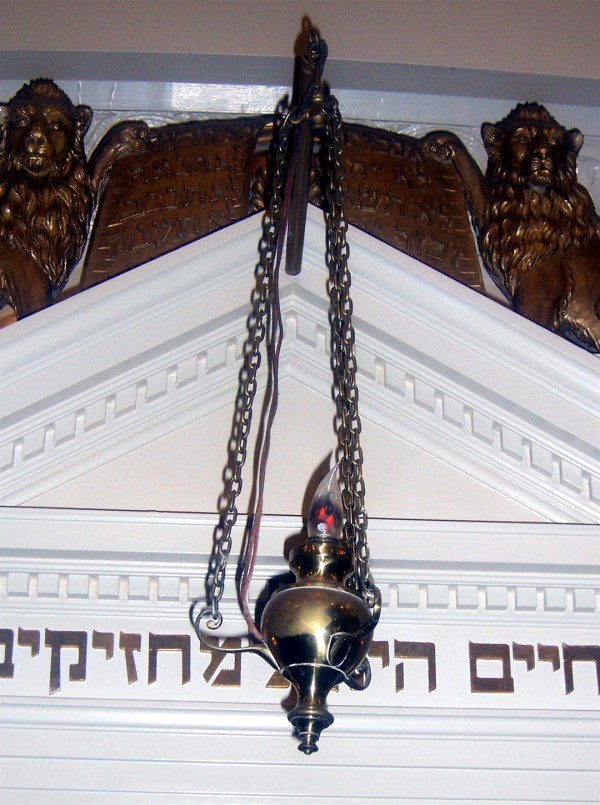
An Eternal Light (Ner Tamid), which hangs above the ark in most synagogues, is often associated with the seven-branched Menorah and the incense altar. It symbolizes God’s eternal Presence.
The Eternal Light (Ner Tamid), which was to be lit before the Lord inside the desert sanctuary, is perhaps also a metaphor for our own personal inner sanctity.
While our thoughts remain hidden and our actions are not known to all, God is continually present in our lives and sees all.
He wants us to put away sin and become clean and holy as He is holy, so everyone we meet can witness His holiness. Just as God’s Lamp burned inside the Tabernacle, His light should be burning brightly in the hidden places of our heart.
Through His final sacrifice, Yeshua has delivered us from the kingdom of darkness and transferred us into the Kingdom of Light. (Colossians 1:12–13)
Because of Him, we can have victory in our lives over sin and be transformed from the inside out through the power of the Ruach HaKodesh (Holy Spirit).
“May these words of my mouth and this meditation of my heart be pleasing in your sight, LORD, my Rock and my Redeemer.” (Psalm 19:14)
Holy Garments: The Armor of Light
“The LORD wraps Himself in light as with a garment.” (Psalm 104:2)
Parasha Tetzaveh describes the priestly garments (bigdei kehuna) that the priesthood is to wear when performing their duties in the Temple.
The kohen (priest) was required to wear a special head covering, pants, belt, and shirt—all white to represent purity. Each garment was designed to display the splendor, beauty and majesty of royalty.
Jewish tradition holds that when these priestly garments wore out, they were used as wicks for the Temple lamps.
Because Yeshua’s sacrifice gives us direct access to the throne of God, the apostle Peter states that Believers in Yeshua, Jew and Gentile, have a special status—a royal priesthood and a holy nation—and a specific task:
“But you are a chosen people, a royal priesthood, a holy nation, God’s special possession, that you may declare the praises of Him who called you out of darkness into His wonderful light.” (1 Peter 2:9)
As royal priests, we are to be clothed in such a way that reveals a sense of awe, honor, and reverence for God. The apostle Paul connects our apparel with our behavior by telling us to put on the armor of light:
Let us put aside the deeds of darkness and put on the armor of light. Let us behave decently, as in the daytime, not in carousing and drunkenness, not in sexual immorality and debauchery, not in dissension and jealousy. Rather, clothe yourselves with the Lord Yeshua HaMashiach (Jesus the Messiah). (Romans 13:12–14)
How we appear on the outside is not what really counts; it is all about the condition of our hearts:
“Above all, clothe yourselves with love, which binds us all together in perfect harmony.” (Colossians 3:14)
Indeed, the most beautiful attire is not found in designer clothes or the latest styles; it is the light of the Anointed One—Yeshua HaMashiach—shining from the inside of us for all to see.
This is the light with which Adam and Eve were clothed in the Garden. When we are clothed in His light, innocence is restored, and we are no longer alone since we have fellowship with God and one another.
“But if we walk in the light, as He is in the light, we have fellowship with one another, and the blood of Yeshua, his Son, purifies us from all sin.” (1 John 1:7)




